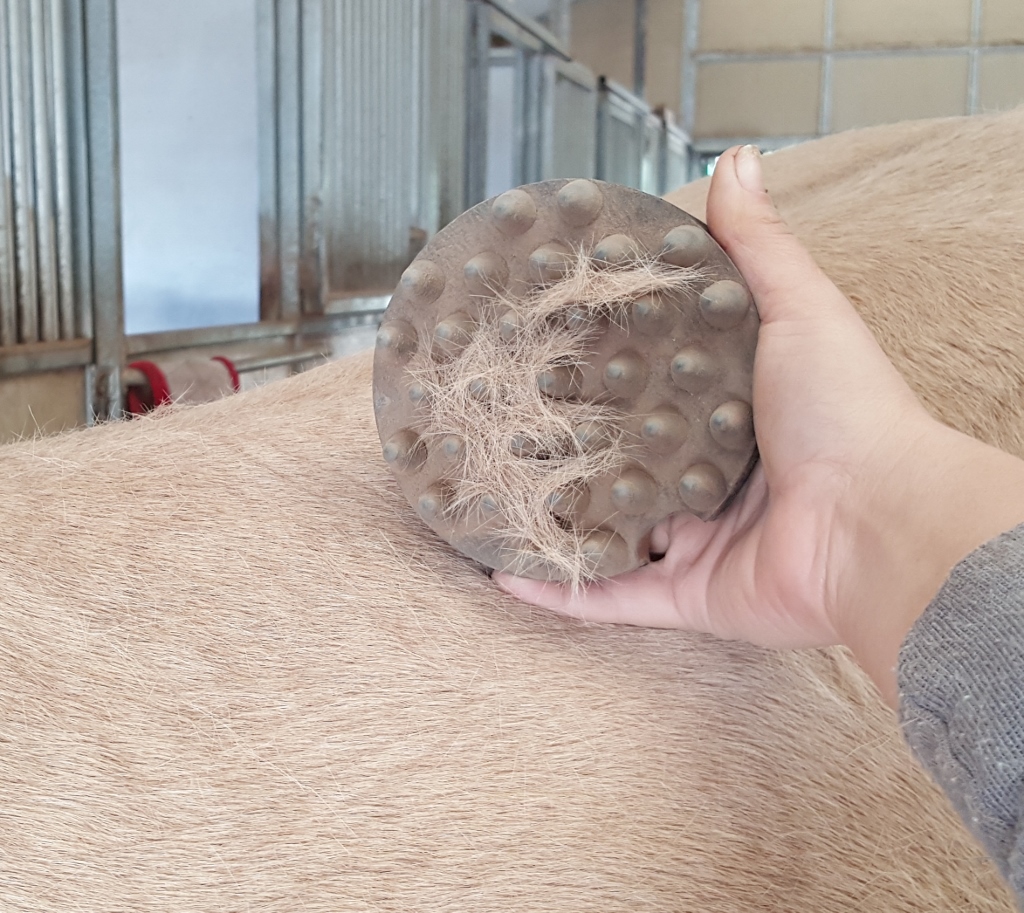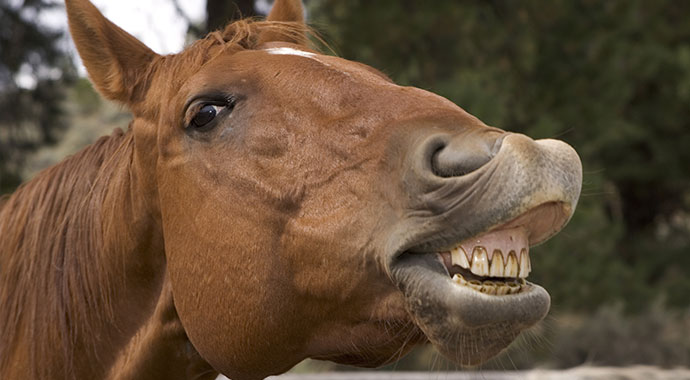We can all conjure images of wild horses running across unfenced plains, grazing on tall grass and drinking from running streams. The horse is an icon of freedom; he was not built, physically or psychologically, to live in a confined space, and yet the modern world is now a place where stalled horses are the norm. There are a myriad of reasons for keeping a horse confined, and most of them are valid, but in doing so, the responsible horse owner must consider ways to make this confinement comfortable for their equine partner.
The stalled horse depends one hundred percent on his owner for all of his needs, unlike the pastured horse, who can graze, move, interact, play, etc., as he chooses. When your horse is stalled, he is typically fed twice daily, has his area cleaned, and has access to water, but for many horses, this is simply not enough. Indeed, we often see horses displaying their frustration through behaviors like cribbing, weaving, pawing, kicking, and even lashing out at people and other horses. The following are a few key things that all owners can address to maximize their horse’s stall comfort.
Stall Size
Most show horses are kept in “box stalls” or “barn stalls” in an effort to keep them safe, blemish free and engaged in their training. Many pleasure horses are kept in pipe pens because it is simply more economical, or perhaps, all that is available in the area for boarding. Traditionally, 12×12 and 12×24 were the most common sizes for box stalls and pipe corrals, respectively, but we are seeing an increase in stall size at most boarding facilities in recent years, as owners have realized that horses are more comfortable the more space they have. So, if you have a show horse, consider a stall with a safe “run” that allows for some outdoor access, and if you have your horse in an outside corral, consider a facility that offers larger sizes. The more room your horse has to move while in his stall, the happier they will be.
Feed/Grazing
In the wild, a horse would graze and move constantly throughout the day and night, and this is how his digestive tract was designed to function. A stalled horse is generally fed twice daily, and typically, he will finish his meal within one hour, which leaves twenty-two hours without feed. This can cause both physical issues (increased colic risk, ulcers, etc.) and psychological issues. A good way to combat this is to use a “slow feeder”, like the Freedom Feeder Hay Bag, which helps to mimic the grazing process. These bags can be filled with a low calorie supplemental feed, like Timothy Hay or Orchard Grass, and secured to a stall. Usually, one flake in the bag per day, in addition to your horse’s normal feed routine, will be enough to keep him “grazing” most of the day/night.
Exercise
Imagine being locked in your bedroom with none of your “toys” and only a window or two to look out of…you would likely find yourself bouncing off the walls in short order; the same is true for your horse, who has a physical need to expend energy on a regular basis. Being sedentary for long periods of time can cause, or exacerbate, problems like arthritis, stiffness, weight issues (which can lead to disorders like Metabolic Syndrome or Laminitis), etc. A stalled horse should be exercised (45 minutes to 1 hour of sustained “work”) at least five days per week as a general rule.
Playtime
“All work and no play” makes for unhappy people; the same is true for the horse. Most horses confined to a stall and only taken out to be ridden for an hour a day, will not find enough physical and psychological stimulation to be completely content. This is when “turn out” time really becomes a necessity. Whether you have access to a grassy turn out pen, or just an open arena, allowing your horse some free time to himself can do wonders for his mind. Turning out your horse (either alone or with a friend) for thirty minutes after a training session, and for at least an hour on days when he is not being ridden, will greatly improve his quality of life.
Some horses also enjoy mental stimulation in the form of “toys”. There are many different alternatives in this area, including stall “pacifiers”, which are essentially rollers with replaceable treats that can be attached in the corners of a stall, treat balls, which are generally clipped to fences or secured from above, and non-treat toys like the Jolly Ball, that can help keep your horse’s mind occupied. Remember, with all of these items, safety must be addressed, so consulting a veterinarian or horse trainer is a good idea before allowing your horse access.
Socialization
Horses are herd animals, and thus they do not typically do well alone. Indeed, you have probably heard of horses who “buddy up” or become “herd bound” when in groups. It is important for horses to see, hear and feel others of their own kind in order to stay psychologically fit. Turning your horse out with other horses for “play” can be a good way to keep his mind active, but if you have a show horse, or a horse that does not do well with others, you should at least make sure he has clear line of sight to other horses and barn activity while in his stall.
In the end, the most important thing to understand about horses is how they are meant to live and why. Once you know what is “natural”, you can go about making your horse’s life in this unnatural world as natural as possible within the confines of your individual situation. Remember, a happy horse makes for a happy rider.




